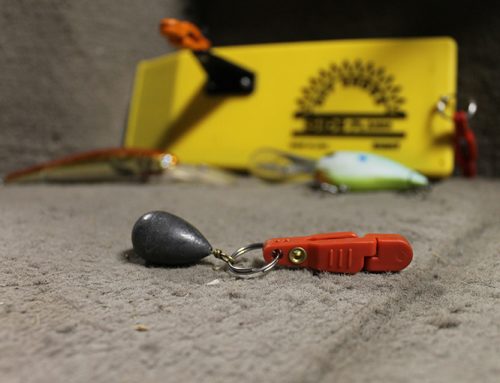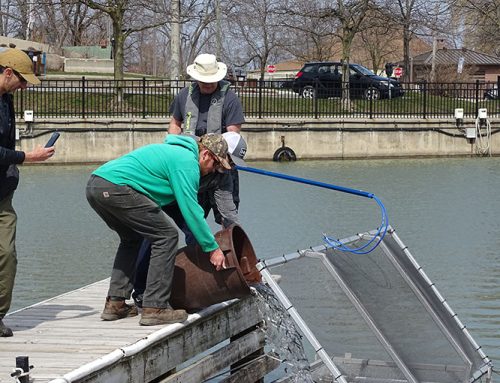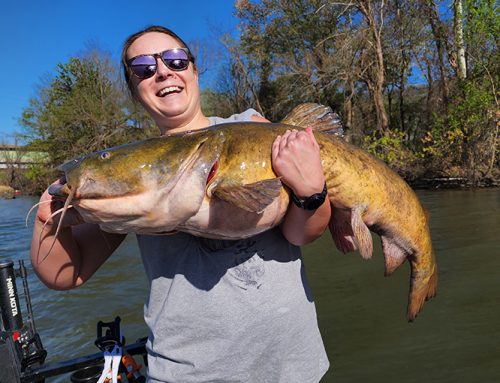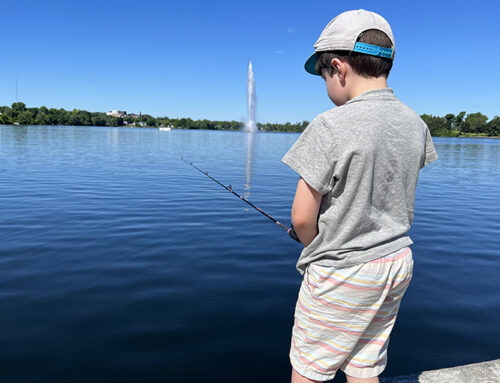
What better way to spend a birthday than bass fishing?
I never really had the opportunity, though, since my birthday falls on May 8. That all changed in 2021 after the creation of a new catch-and-release bass season from Jan. 1 to May 10 on Lake Ontario. For my day, I headed to the Bay of Quinte — a world-class largemouth fishery not far from my home. The hours went by with some success, including a five-pounder. My expectations, however, were higher.
You can’t make bass eat
My ego remained intact until I started chatting with celebrity angler Peter (Pete) Garnier, as he pulled his boat up behind mine. Garnier started telling me about his own fishing, using words like on’em, double-header, and awesome. My head went numb. What did I know? This new early season in FMZ 20 was as new to me as it was to everyone else.
“You can’t feed them,” said Garnier, “Springtime is pure power fishing. When bass become moody — and they will — or if you’re seeing bass, either visually or on your sonar but they’re not committing, keep moving,” he said. “Don’t waste time trying to make them eat.”
Prime spots
This is a time of transition and bass are on the move. Bewdley resident Joe Ford, 43, has been guiding for more than 20 years in Ontario and on Lake Fork, Texas. Years of guiding the Texas pre-spawn was a good precursor to spring Ontario smallmouth fishing.
You’ll find pre-spawn bass between their spawning and wintering grounds. “The severity of the winter plays a major role in bass location along their transition,” Ford said. Last year, smallmouths were as shallow as five feet. Our winter was mild, and several hot days really caused the water temperature to jump…The year before, I never saw any bass that shallow.”
Transition areas for smallmouth can range from five to 30 feet of water. Focus on sand flats, rock spines, shoals, or even cracks in the rock. Finding them takes time and persistence. The largemouth search usually starts at 10 feet or shallower. Garnier seeks established weed flats that are protected from the wind.
The best locations have a distinct inside grass line in three to six feet of water. Schools will filter along this grass edge. If it’s early or a cold front drives the bass deeper, relocate to open water adjacent to these hidden pockets.
Barometric pressure
Garnier strongly advises using barometric pressure as a guide. “During the spring, it’s best for the barometric pressure to be low or stable,” he said. “That doesn’t mean overcast and damp, but those conditions can be great, but the pressure needs to be low.”
Garnier offered a story to back up his beliefs. “A buddy and I went out on a Wednesday afternoon last spring and just smashed them. The next day, my buddy went to the exact spot with the same baits, but the pressure was way up. He barely caught six the whole day.”
Spring medicine
Garnier’s top bait is a chatterbait, followed by a spinnerbait, and crankbait. A chatterbait or bladed jig’s heavy vibration rocks at this time of year. Use a steady retrieve with several short pauses. Even when the retrieve slows way down, chatterbaits wobble enticingly.
He is also a strong believer in medium/heavy action rods with a parabolic bend for chatterbaits.
He pairs it with a 6.8 to 7.1 baitcaster and 14- or 17-pound fluorocarbon.
Ford also power fishes for smallies, but his approach is much more subtle. Jerkbaits and spybaits are great to find fish, but to really clean up, he switches to a smaller swimbait in shiner or smelt pattern rigged on a jighead.
“I almost always use the DSSM75 swimbait from STH (Set The Hook) and a Freedom Tackle swimbait jig. If I’m swimming the bait, I use a 1 ⁄8 to 3 ⁄8 oz and move to 3 ⁄8 to 1 ⁄2 oz for dragging,” he said. “In the colder water of early April, smallmouth may be laying on the bottom, so you need the bait right beside them. As water warms, they’ll become more reactive but still need finesse.”
If the bite is really off, he might slow down to drag a Ned rig or tube, but like Garnier, Ford thinks it’s wiser to find active schools than forcing the bite.
Spring smarts
Emerging from a long winter, bass, especially deep smallmouth, are really vulnerable to fatigue. Follow the rules and release bass quickly and with respect. Depending on ice-out, FMZ 20’s early bass season can be short, but also amazing. It’s time to seek out this new adventure.

Originally published in the April 2023 issue of Ontario OUT of DOORS
Luigi’s love affair with angling started when he was a lad and has never faltered. When not gawking at lures, he can be found setting goose or turkey decoys, or in a tree stand.
Reach Luigi at: mail@oodmag.com






Leave A Comment